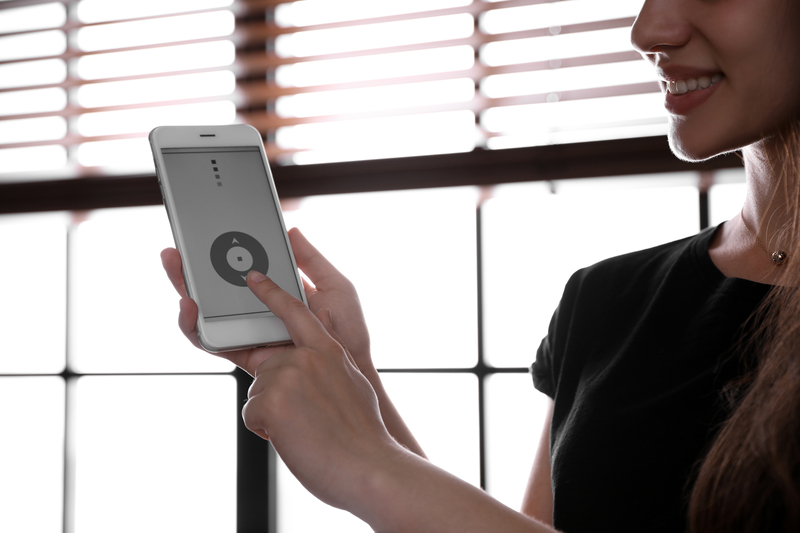Published on 24th June 2024
In the age of smart homes and the Internet of Things (IoT), everyday objects are evolving into interconnected, intelligent devices. Among these advancements, smart blinds emerge as a standout innovation, seamlessly blending style, convenience, and energy efficiency. These motorised window coverings, controllable via smartphone apps or voice commands, exemplify the transformative power of IoT.
By automating light and temperature control, smart blinds not only enhance home aesthetics but also contribute to significant energy savings. They represent a practical step towards a future where our living spaces are not just comfortable and secure, but also environmentally responsible and effortlessly customisable.

Smart blinds are motorised window coverings that can be controlled remotely via a smartphone app, voice commands, or automated schedules. When integrated with IoT, these blinds become part of a larger ecosystem of interconnected devices, allowing for more sophisticated control and automation.
For a more seamless experience of the same, you can incorporate a hub or an adapter for controlling your smart blinds. Adaptors/hubs tend to provide a central point for controlling and integrating various smart devices, including motorised blinds. It also integrates with other smart home platforms, such as Philips Hue, SmartThings, and Control4, to create a comprehensive smart home system.
IoT, or the Internet of Things, refers to the network of physical devices embedded with sensors, software, and network connectivity, enabling them to collect and exchange data. In the context of smart homes, IoT allows devices like blinds, lights, thermostats, and security systems to communicate and work together seamlessly.
a. Remote Control: With IoT, you can control your blinds from anywhere using your smartphone. Whether you’re at work or on vacation, you can adjust your blinds to maintain privacy or let in more light.
b. Voice Control: Integration with voice assistants like Amazon Alexa, Google Assistant, or Apple HomeKit allows you to control your blinds with simple voice commands. “Alexa, lower the living room blinds” becomes a reality.
c. Automation and Scheduling: Set your blinds to open or close at specific times or in response to certain conditions. For example, they can close at sunset for privacy or open in the morning to help you wake up naturally.
d. Light and Temperature Sensors: IoT-enabled sensors can detect sunlight intensity and room temperature. Your blinds can automatically adjust to maintain optimal lighting and temperature, reducing the need for artificial lighting and easing the load on your HVAC system.
e. Integration with Other Smart Devices: Your blinds can work in harmony with other smart devices. For instance, when your smart thermostat detects the room is getting too warm, it can signal the blinds to close, reducing solar heat gain.
One of the most significant benefits of IoT-integrated smart blinds is energy efficiency. In the UK, where energy costs have risen sharply in recent years, this is particularly relevant. According to a study by the Energy Saving Trust, up to 25% of heat loss in homes occurs through windows. Smart blinds can help mitigate this by automatically adjusting based on sunlight and temperature.
During the UK’s cooler months, smart blinds can close at dusk, providing an extra layer of insulation to reduce heat loss. This can lead to lower heating bills, a welcome relief given the recent energy price cap increases that have affected millions of British households. Conversely, in the warmer summer months (which are becoming more common due to climate change), smart blinds can reduce solar gain, lessening the need for energy-intensive electric fans or air conditioning units.
Moreover, smart blinds contribute to a more comfortable living environment, a boon in the UK’s variable climate. They can prevent glare on your telly during a Saturday night Strictly Come Dancing viewing, or on your computer screen while working from home. They also protect your furniture from UV damage – particularly important in conservatories or south-facing rooms that receive a lot of sunlight.
In our digital age, privacy concerns are paramount. Smart blinds offer an elegant solution, especially in the UK where homes are often closer together. Program your blinds to close automatically at dusk, shielding your living spaces from prying eyes. For added security, integrate them with your home alarm system to close when armed, creating an extra layer of protection.
Advanced systems even work with motion sensors or CCTV cameras, automatically closing blinds if unexpected movement is detected outside. This not only enhances privacy but also acts as a visible deterrent to potential intruders. Smart blinds: a stylish, high-tech answer to modern privacy needs.
Discover the power of IoT-integrated smart blinds with the TaHoma system. From reducing your energy bills to creating the perfect ambiance for any occasion, TaHoma makes it all effortless.
Whether you’re battling summer heat or winter chill, protecting your furniture, or just wanting to enjoy your favourite tv shows glare-free, TaHoma has you covered. Don’t let rising energy costs or unpredictable weather control your comfort. Take charge today!